First off, after running Will to this and that farm to get equipment/tractors (he was extremely busy trying to beat the rain that was supposed to come today), I was off to the town of Virginia to buy more pyrethrin bug dust. Yesterday morning, Will discovered that a horde of corn earworms are attacking our Seneca Sunrise sweet corn in the main garden, happily munching not only on the leaves but also on the tassels which have not emerged from the tops! Tassels provide the pollen so no tassel, no pollen, NO CORN! I spent all of my “spare” time shaking dust down into the tassel, then giving each stalk a good shake to make sure it was distributed well. After each pound, I’d wash up thoroughly. Even though pyrethrin is a natural product, I don’t like it all down my arms. I also found the earworms busily munching on the rare Native American Big Horse Spotted corn too. As it’s a late corn, the tassels haven’t developed so they aren’t eating them much, but are hiding there in the daytime. At night, they come out and munch the leaves. When I was finally done, I took a long shower and changed clothes. I hope that does it! Luckily, there seems to be no damage in the corn rows in the berry patch and Central garden. We’ve never had corn earworms before on this homestead. Goes to show you, there’s always something trying to get you!
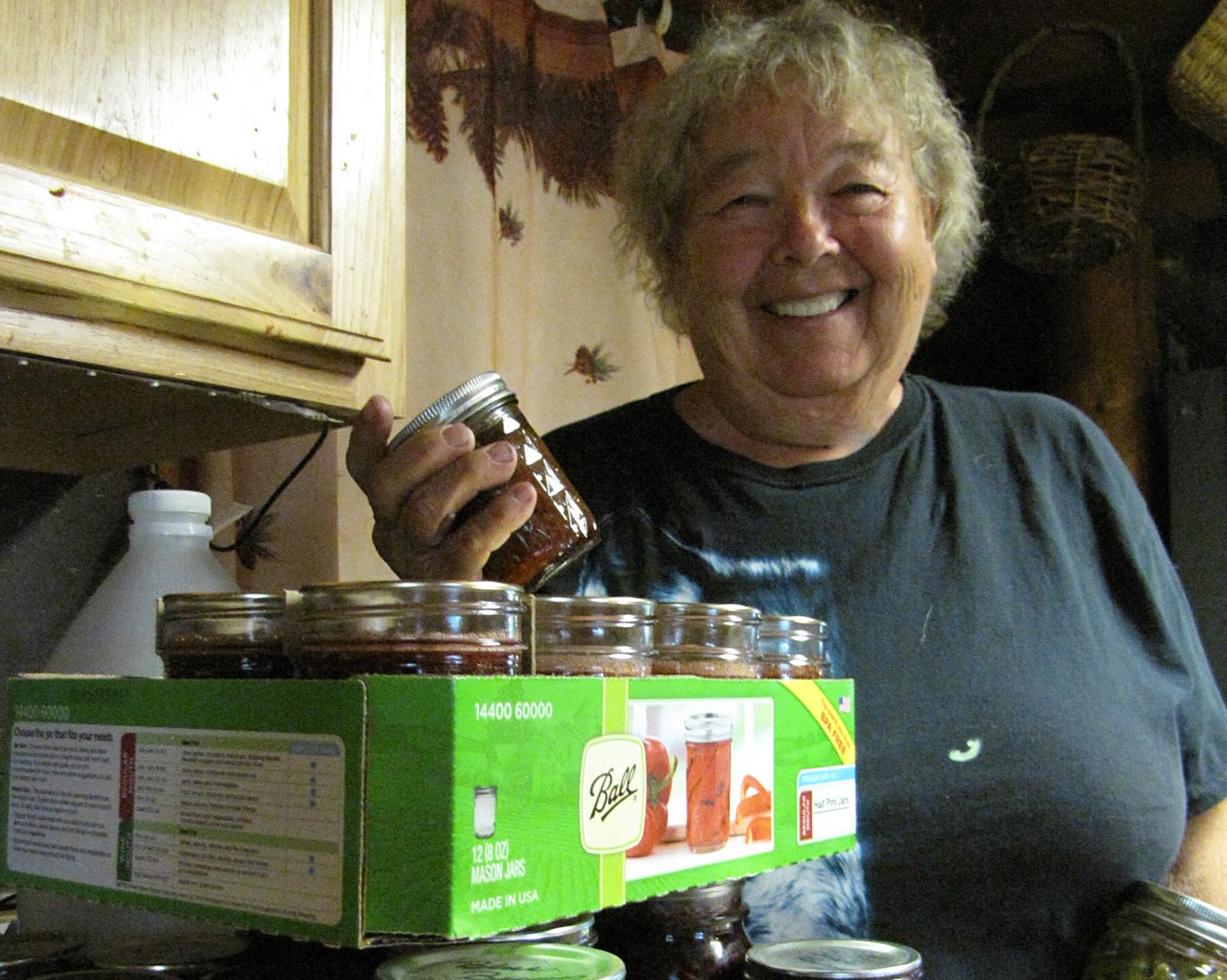
We’ve also been canning up a storm. Alisha is a berry-picking crazy woman! She picks lots every day and we’ve been making lots of pin cherry, bronco cherry, and raspberry jelly, along with blueberry jam. We’ve also canned blueberries and a second batch of Provider green beans. I can’t believe we ate our first bunch of beans 45 days from planting. It has been a very good growing year.
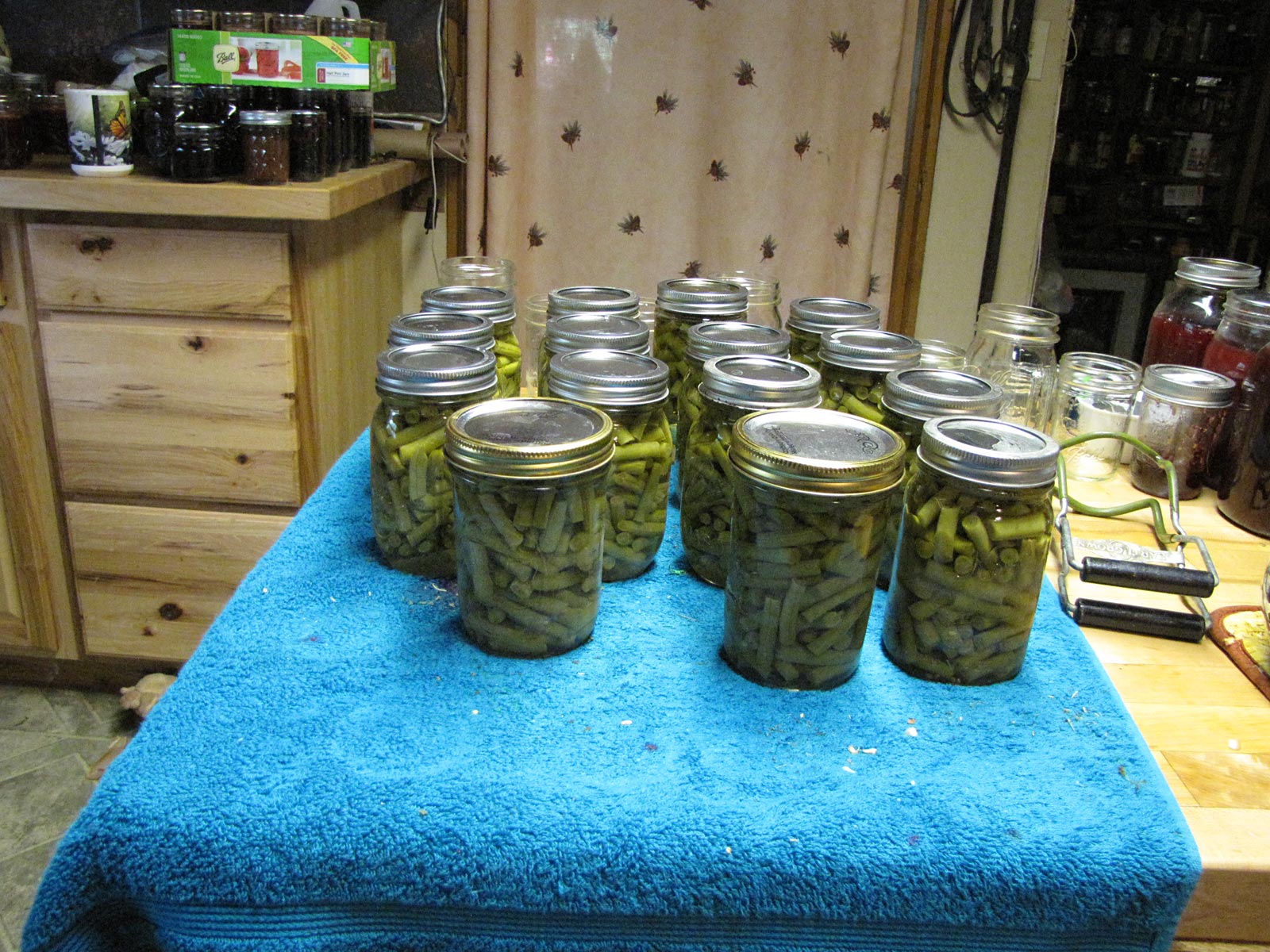
Will finished our first week of haying with 54 big round bales of excellent hay. We’re really happy with that! He has three more farms yet to hay, so we’re praying for good haying weather in the close future. He has a brake hanging up on the International tractor but managed to finish the last small field yesterday with no trouble. Repairs in the future…
Alisha and Will are busy in the North garden, side dressing several rows of corn with rotted manure. We don’t like the way that corn’s growing, kind of yellow and slow growing due to the big rains we had earlier. We’re hoping the manure will help.
For those of you who asked about pigweed, I’ve included some photos. This is Red Rooted Pigweed, a wild amaranth. It is a very common garden weed and grows on most any disturbed soil, nationwide. If unsure, pull a weed and look for the distinctive red root. (But when eating any wild plant, it’s wise to have an experienced person show you, and when you first eat it, eat only a little in case you’re sensitive to it.)
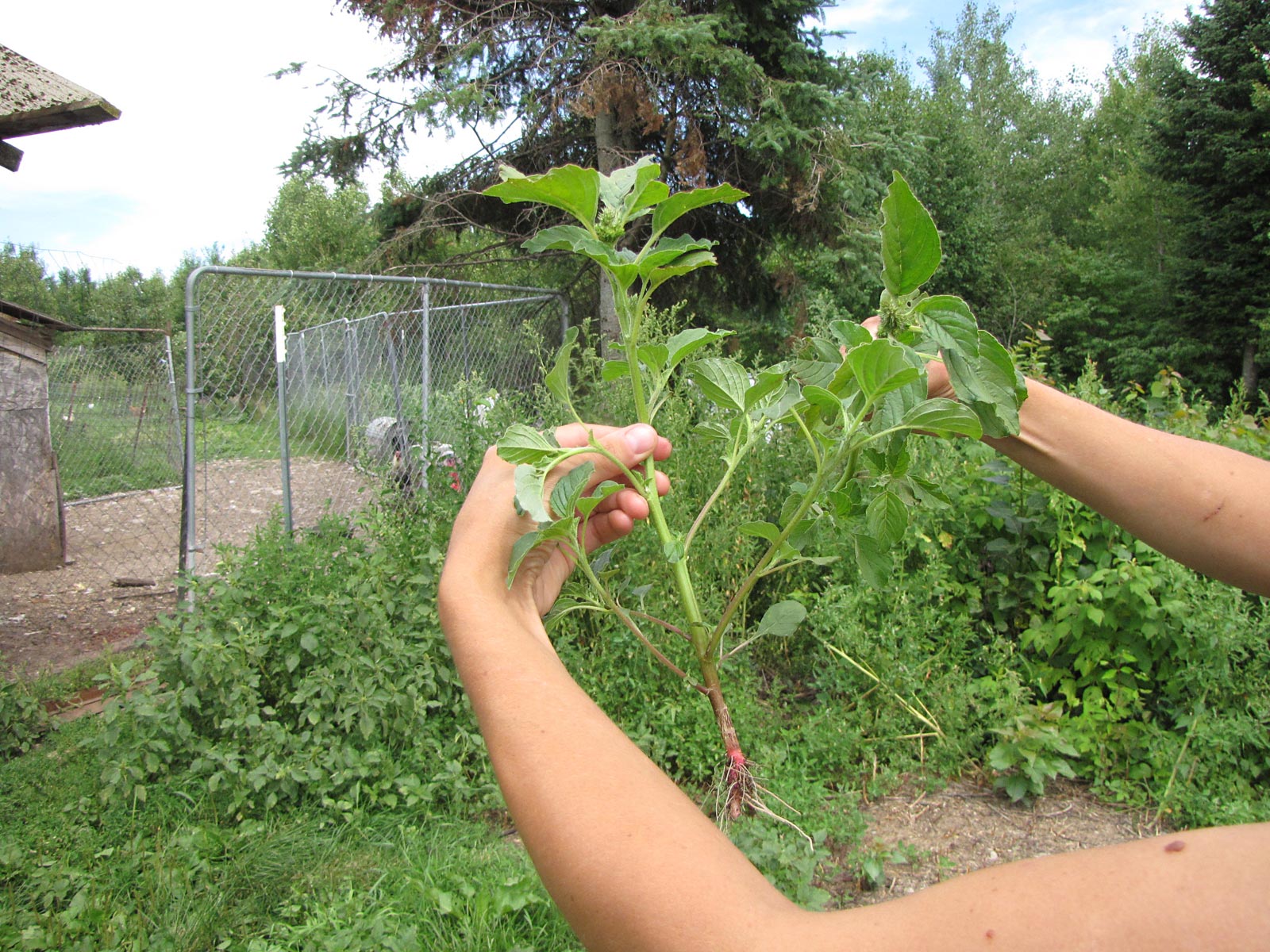
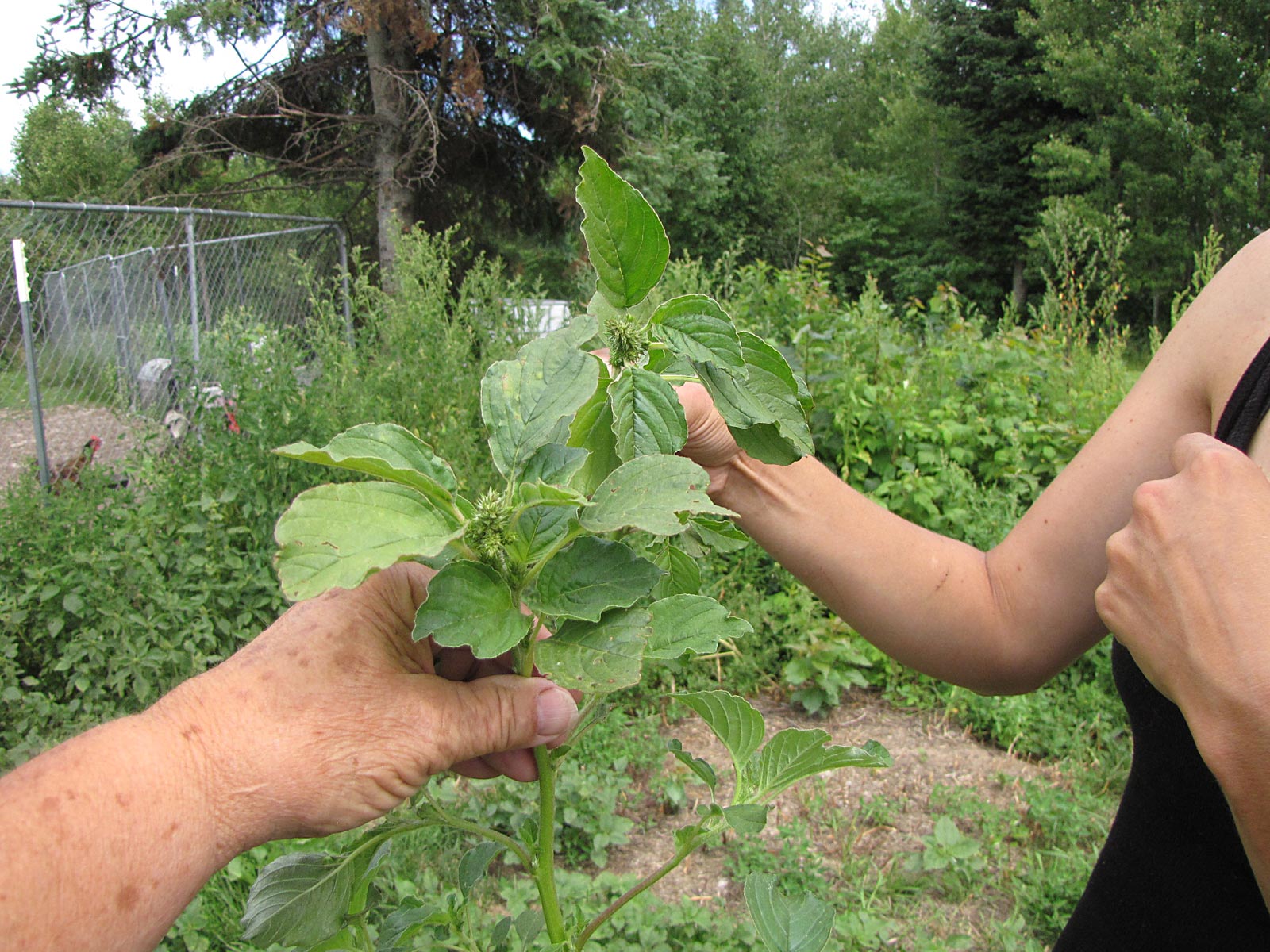
— Jackie


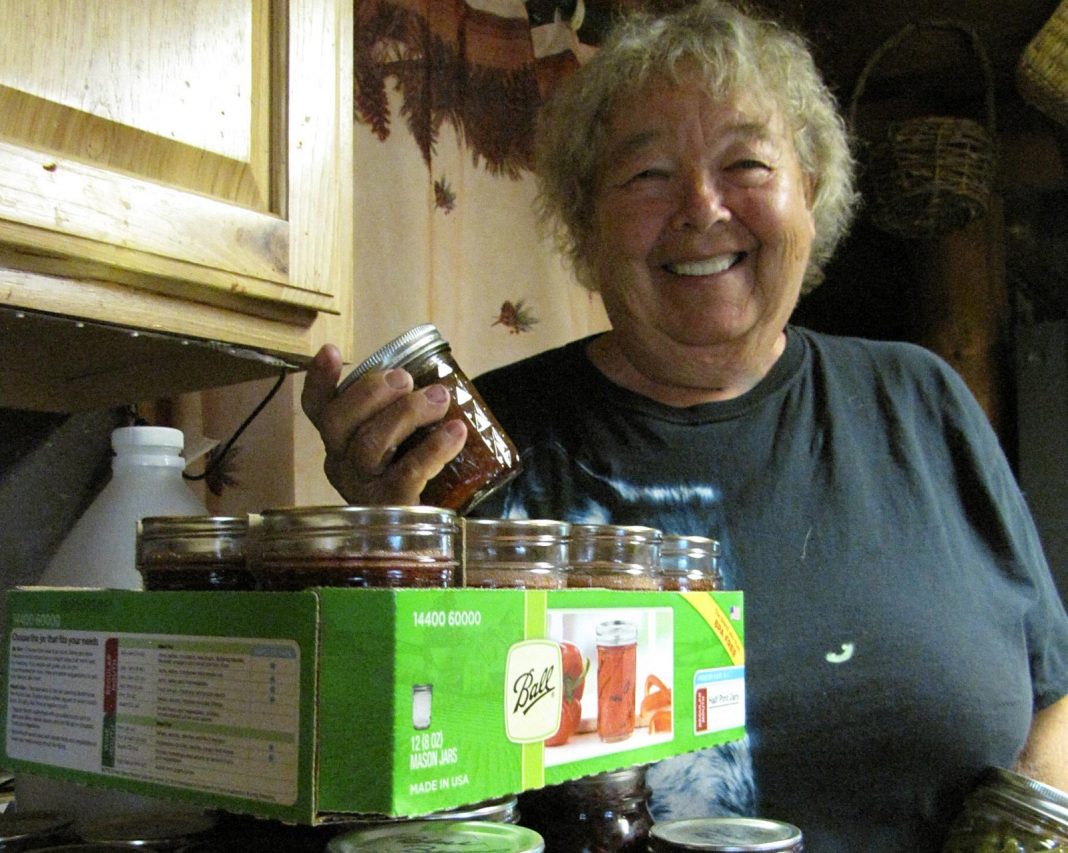

Yep, I know. Some also call lambs quarter “pigweed”. But true pigweed is red rooted pigweed.
Jackie, thanks for sharing that you also make use of harvesting wild grown plants as well as all your gardening. I find wild harvesting helps the grocery budget and the plants are full of nutrients.
When I was a child, my family would go out to harvest mushrooms and berries. I still like chokecherries, pincherries, and high bush cranberries for jellies and syrups. I like rosehips for jelly and dried for tea. I found my first wild strawberries as a three-year old child on my grandparents’ farm and they are still a treat for me.
I do like dandelions, nettles, and lamb’s quarters. Dandelion greens for salads and cooking and the roots for a coffee substitute (I love dandelion “coffee”). Nettles are delicious in a nettle potato soup and dried for herbal tea.
I also like burdock root and pennycress. The mustard/peppery taste of pennycress is so good added to salads. I like to collect and freeze spruce and fir tips to make tea in the winter.
I also use wild plants for medicines. Spruce needles for cough/cold syrups, a chest rub for colds and a pain-relieving ointment for achy muscles and joints. I also pick balsam poplar buds which make a good pain-relief ointment for joint and muscle pain.
I’ll have to try pigweed now.
Ooh, and saskatoons! How could I forget saskatoons? Your canned blueberries reminded me — canned saskatoons, frozen for muffins, quick breads, crisps, cobblers, ice cream, milkshakes and so much more. Good jam too.
My mom used to can saskatoons when I was a child. We kids loved to pour milk or cream into a bowl of canned saskatoons and watch the “volcanoes” that formed as the dairy swirled through the purple juice.
Thanks for bringing back such wonderful memories.
Oh, I agree. I love canning and that feeling of satisfaction of seeing all those jars full of tasty colorful food. I don’t get the same feeling when I preserve food by freezing. Somehow it’s the sight of all those jars that gives me the good vibrations. (I think it’s the jars — I feel the same comfort when I look at my mason jars full of herbs and plants that I dry for herbal tea.)
Nice looking jars of beans that you canned, Jackie. You’re posts are always so inspiring. (Now if I could just find a way to get my house in the country.)
I remember many, many family excursions to pick wild foods, especially black walnuts and hickory nuts. Our “garden” includes 100’s of acres of woods around us and believe you me, we watch closely for what’s coming in next!
I’m rooting for your house in the country.
That’s for sure, there’s always something trying to eat food! Here, if it’s not squirrels, it’s Japanese beetles, fire ants, tomato horn worms and more. The raccoons eating our sweet corn finally caused us to give up trying to grow it. I sure do miss it, as it’s not easy to find non-GMO/organic corn around here, or if you do, it’s $1.50 an ear. We encourage a wild plant called lambs quarter here, but discourage the prickly pigweed. I’ll need to give it a taste, though. Canning blueberry jam is on my to do list today. Sure enjoy reading what you’re up to.
We discourage both lambs quarter and pigweed, but, heck, they’re “weeds” and we always find a few patches here and there. Pigweed’s best before the prickly flower head emerges as it’s more tender then. You can stop raccoons by adding two strands of electric fence on the outside of a 2″x4″ wire fence. One should be about a foot off the ground and the second about two feet. They’ll either touch it with a foot pad or nose and one shock will usually do the trick. Been there; done that. Luckily we don’t have ‘coons here. Yet.
Maybe for you it’s been a good growing year…
My entire orchard winter killed. I’m having my doubts about getting any tomatoes. And, for the first time in many years, I’m probably gonna have to buy potatoes. Most of my garden is still under water, and it’s the highest point on the property.
We have the opposite problem. No rain. We got a few cases of canned Provider but no rain no beans!
Same with tomatoes. I have a few but for 70 plants its not as much as I had hoped.
Late freezes ruined the orchard.
Each year seems dryer.
I used diatomaceous earth for Jap beetles and tomato horn worms. Works well but regular application is what worked.
I wish we had a few more hands like Jackie to help!
When you replant try being very picky about the rootstock on your grafted trees, and ordering from St Lawrence Nursery. You can get winter hardy fruit and berry plants other places too but you have to read the descriptions carefully and then double check with a second source. Can you grow in raised beds and berms to avoid the water problem? Check out Sepp Holzer’s books, articles and interviews for suggestions for success in difficult gardening situations.
Thanks! Will check out your suggestions.
Our trees are Stark Bros. The peach and apricot were blooming when the hard freeze came. The trees seem ok but no fruit for jams and canning.
J
Sorry Tom,
It was a tough orchard year for us too. We lost about 7 trees in all. With homesteading, it’s try, try and try again. Sorry too about the garden. That’s tough. Better luck next year. Take the time to till in more manure, kill down grass & weeds.
Where do you get all your energy
That was my thought too and often is when I read what Jackie’s up to. I’m sure it’s satisfying though, seeing the direct link between hard work and good outcomes for the family. Jackie, any energy advice for the rest of us mortals?
Energy? What energy? I just keep plodding along at Grandma speed. One foot in front of the other keeps things moving. And I just love what I’m doing, too!!!
Ugh PIGWEED! The first year in our new house the yard was FULL of it! Picking knee high seeded pigweed by hand on a half acre. Next year I pulled before it went to seed, and by the third year it was mostly gone. Love seeing all your progress!
It’s amazing; when you start thinking of a weed as a vegetable, suddenly it doesn’t seem so horrible. In New Mexico, our garden was on the old ranch cow yard, and when we watered it it was full of pigweed which grew so fast and so big we had to chainsaw it down! Before it went to seed. The next year it was just as bad as those seeds can lay dormant for decades. But in three years, it was under control. Whew!
Thanks for the Pigweed info. When searching for Pigweed online, many different weeds are called Pigweed.
Comments are closed.